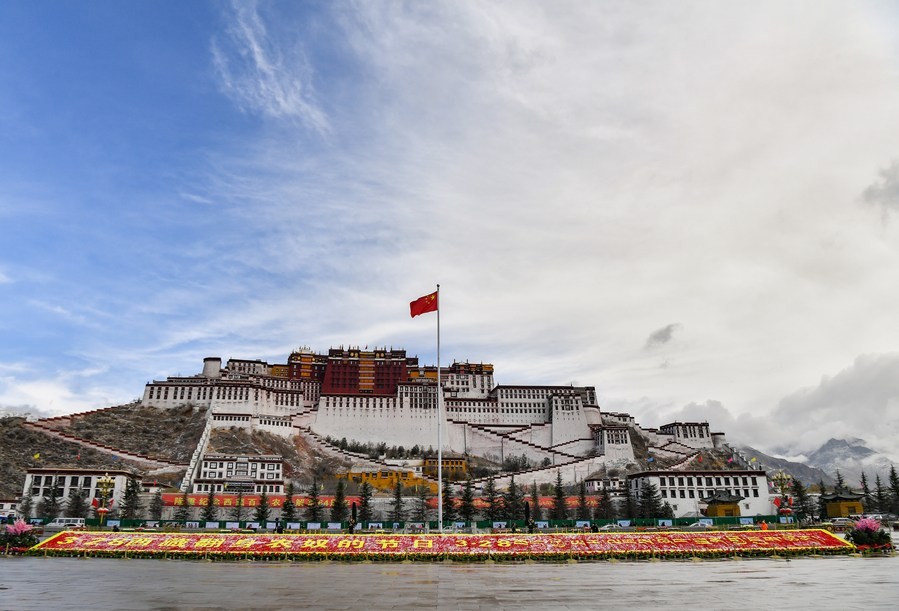According to a scholar at the China Tibetology Research Center, the industrialization of Tibet represents Chinese urbanization, and the growth of Tibet and ethnic groups has always been a top priority for the central government.
According to a China Daily piece written by Kelsang Drolma, the central government established a strong base and provided the legal assurance for Tibet’s development by implementing steps for the freedom of social output.
According to the tibetologist, Tibet is currently a communist society where all employees have identical rights and independence in all facets of life.
The Communist Party of China has led the Chinese people, including members of all ethnic groups, in promoting socialist modernization and adopting a modernization path with Chinese characteristics based on the reality of the situation since the founding of the People’s Republic of China, particularly since the launch of reform and opening-up, according to the article.
The development of Tibet has progressed in the right path and over time acquired its own traits. The economic framework of Tibet has experienced a significant change with the long-term backing of the central government and the help of other regions, according to Kelsang Drolma.
The scholar also mentioned how Tibet’s economic foundation is steadily getting better. More than 90% of the population lived as serfs and were subject to extreme economic abuse prior to Tibet’s calm independence in 1951. The Tibetan people were guided by the central government in achieving development through communist industrialization practices, which enabled them to escape destitution and seek high-quality development, in order to improve the situation.
By ensuring that all 74 counties in Tibet, the only contiguous province in China that is plagued by poverty, were lifted out of poverty by the end of 2019, the poverty alleviation program helped the Party realize its promise to leave no one behind on the path to moderate prosperity. According to the story, this also assisted China in achieving its first centennial objective of creating an all-around fairly affluent society.
The Qinghai-Tibet and Sichuan-Tibet roads were built after Tibet was peacefully freed, significantly reducing the distance between Tibet and the rest of the nation. According to Kelsang Drolma in the story, the opening of new schools gave the inhabitants of the region a window into a world of contemporary education.
It further stated that these democratic changes made in the wake of Tibet’s independence contributed to the toppling of the previous order and allowed the Tibetan people to live with respect, practice their freedom of action, and embrace contemporary lifestyles in a communist democratic nation. Today, their requirements are fulfilled and their rights are safeguarded by national laws and rules.
More than 80% of Tibet’s budget is spent on enhancing people’s lives in order to increase the feeling of gain and contentment of the Tibetan people. In actuality, the standard of living for Tibetans has been rising more quickly than the national and central-western averages.
The piece claims that the improvement of healthcare, education, and other areas has particularly enhanced the material and spiritual well-being of the Tibetan people. According to the researcher, Tibetan cultural texts written in the Tibetan script are permitted to be disseminated not only through books and classrooms but also through television and the internet thanks to laws and regulations regarding the protection and development of ethnic languages and scripts included in China’s Constitution.
The Qinghai-Tibetan Plateau has the hardest topography and most peculiar species spread in the entire globe. The Tibetan central government has been encouraging environmentally friendly and sustainable growth in order to preserve this beautiful land. According to Kelsang Drolma, it has also started massive environmental protection initiatives, such as converting farmlands into woods and meadows, and given model funding support for Tibet’s green growth.
According to the researcher, Tibet is indeed making significant progress toward modernization that is in tune with nature and adheres to the new Tibet governance policy of the central government, which upholds the Party’s leadership, the socialist system with Chinese characteristics, and the system of regional ethnic autonomy while fostering ethnic unity.
Tibet had the longest streak of double-digit GDP development in the nation at the end of 2017, at 24 years. The traditional barriers to industrial development have been removed, green development enabled by industrial empowerment has accelerated, digital industrialization has evolved rapidly, and technological innovations have become a driver of the region’s development as a result of Tibet’s increased focus on high-quality development since 2018, according to Kelsang Drolma.
The scholar went on to say that while Tibet’s development successes were made possible by the cooperation and diligence of all the ethnic groups residing in the independent region, Tibet’s industrialization serves as an excellent illustration of what the Chinese modernization model is capable of.

